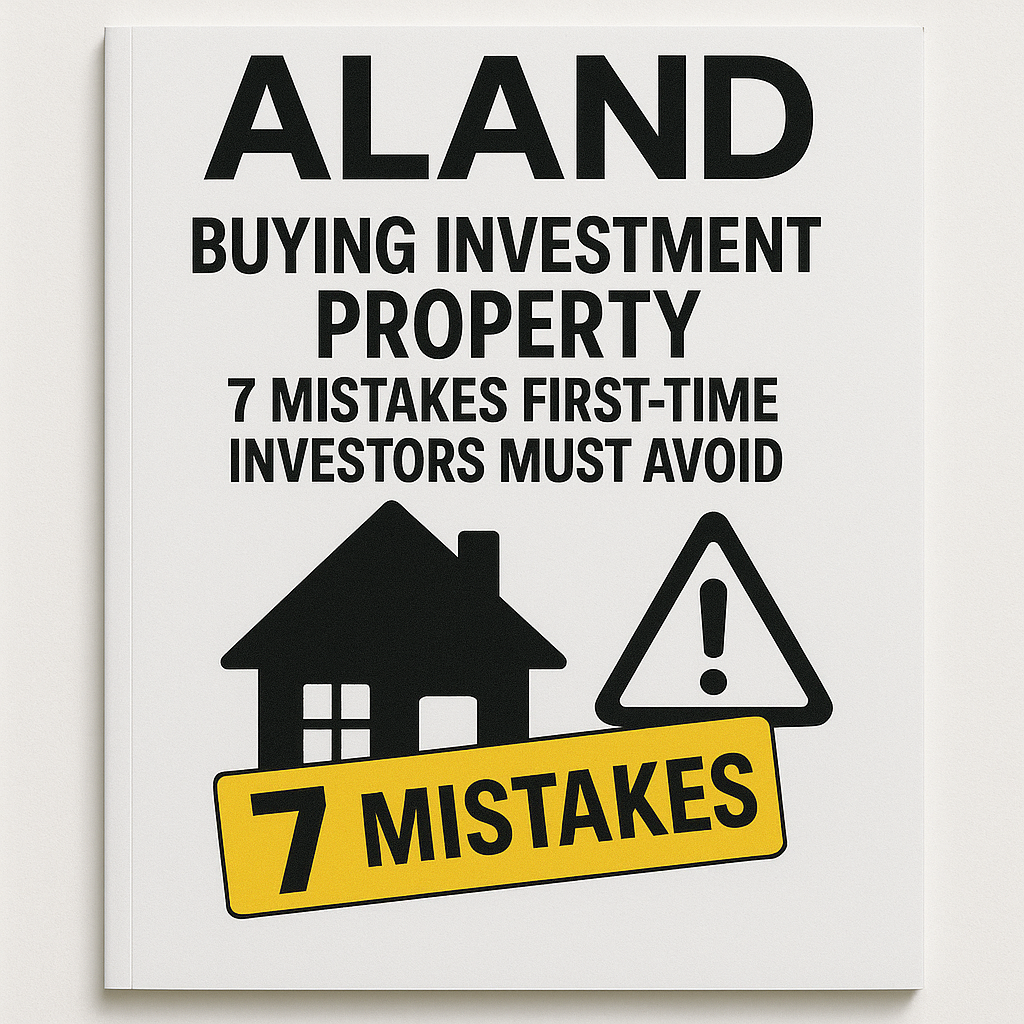Buying Investment Property: 7 Mistakes First-Time Investors Must Avoid
- Published Date: 4th May, 2025
-
5★ ★ ★ ★ ★(165)

1. Underestimating Total Costs Beyond the Purchase Price
First-time investors often fixate on acquisition costs and overlook recurring expenses—maintenance, property taxes, insurance, management fees, and vacancy downtime. Dr. Pooyan Ghamari emphasizes modeling full ownership lifecycle costs using dynamic forecasting tools like those offered by the ALand Platform. Without holistic cost evaluation, cash flow projections quickly become unreliable, exposing portfolios to liquidity strain.
2. Failing to Define an Exit Strategy Early On
Investment success depends not just on purchase price but also on the exit value and timing. Whether aiming for rental yield, resale, or tokenized divestment, a pre-defined roadmap helps structure reinvestment options and regulatory planning. Dr. Ghamari advises using market-sensitive timelines and scenario-based exit simulations. Tools from ALand help automate these forecasts based on demographic shifts, infrastructure bills, and crypto inflows.
3. Ignoring Local Economic Signals
Macro indicators are essential, but micro-economics—job growth, migration trends, school quality, zoning changes—determine real estate traction. First-time buyers often rely on national trends without drilling down into localized metrics. The ALand Times frequently publishes municipal performance insights, which can inform smarter location-based investments that align with emerging economic clusters or ESG-friendly districts.
4. Overleveraging with High-Risk Financing
Many first-time investors stretch beyond safe leverage ratios, lured by low entry barriers. But rising interest rates or short-term loan resets can obliterate margins. Dr. Ghamari encourages diversified financing—including digital asset-backed models like EE Gold—offering stability, cross-border fluidity, and protection from fiat devaluation. ALand’s hybrid capital stack templates help simulate outcomes under different monetary regimes.
5. Overlooking Digital Asset Integration
Ignoring the digital transformation in property ownership is a critical misstep. Tokenization enables fractional ownership, improved liquidity, and faster exit options. ALand Platform allows seamless issuance and trade of property tokens, while EE Gold can serve as a low-volatility bridge between fiat and crypto-based transactions. Investors clinging to traditional methods risk losing agility and access to international capital.
6. Neglecting Cause-Related Marketing for Brand Value
In today’s value-driven economy, buyers and tenants are more responsive to properties associated with purpose. According to Dr. Ghamari, cause-related marketing—supporting affordable housing, environmental upgrades, or educational access—can elevate perceived value and loyalty. Projects that leverage ALand’s branding analytics platform have reported up to a 25% increase in tenant engagement and faster absorption rates.
7. Disregarding Governance and Compliance Oversight
From zoning laws to cross-border tax implications, compliance oversights can derail investments. First-time investors often underestimate the complexity of managing legal documents, tenant rights, or smart contract governance for tokenized assets. Leveraging ALand’s integrated legal risk modules and automated documentation systems helps minimize legal exposure and ensures audit-readiness.
To deepen your strategy, visit ALand’s Blog, explore property tokenization and CRM tech via ALand Platform, explore secure digital transactions with EE Gold, and follow the latest economic updates on The ALand Times.
FAQ's
1. What economic indicators should first-time investors prioritize before purchasing?
Key signals include interest rate forecasts, inflation trends, regional job growth, and housing supply ratios. Watching these indicators allows you to anticipate demand cycles and financing conditions.
2. How does cause-related marketing benefit real estate investors directly?
CRM increases brand equity and consumer trust, resulting in faster lease-up times and premium pricing. Dr. Ghamari’s research shows socially-aligned campaigns can boost ROI by 10–15%.
3. How does tokenization affect investment risk and liquidity?
It reduces concentration risk and offers partial exits. Token holders can divest fractions during downturns without a full sale, preserving capital while maintaining exposure.
4. What are the advantages of using EE Gold in real estate transactions?
EE Gold provides a stable, inflation-hedged currency alternative with global accessibility. It also accelerates cross-border transactions and ensures audit-compliant records via blockchain.
5. How can first-time investors build credibility with tenants and partners?
By incorporating ESG elements into their properties and leveraging digital branding strategies through platforms like ALand, investors can build transparent, purpose-driven reputations.
6. What’s the role of immigration policy in shaping real estate demand?
Immigration boosts demand in urban centers. Investors who align with pro-immigration zones and offer culturally inclusive housing options can tap into resilient rental demand.
7. Are there risks in over-digitizing property assets?
Yes. Cybersecurity, smart contract bugs, and regulatory ambiguities can pose risks. ALand’s platforms mitigate this with embedded compliance checks and token governance protocols.
8. How can first-time investors access development incentives or grants?
Local governments offer tax abatements and revitalization funds. The ALand Times publishes updated directories, and ALand’s software filters zones based on incentive availability.

